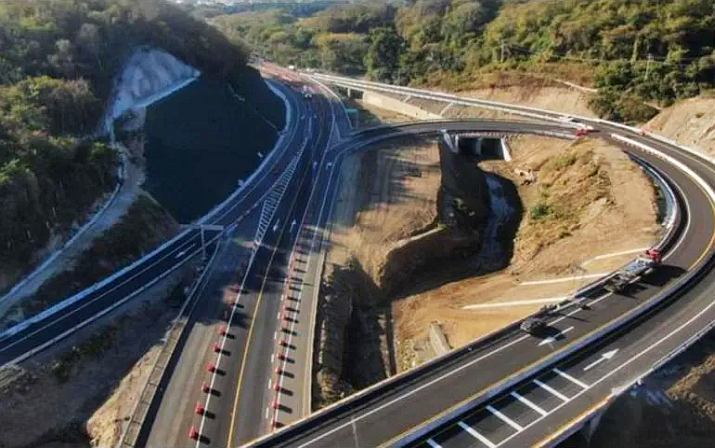
Puerto Vallarta, Jalisco – Another section of the highway that will eventually create a shortcut from Guadalajara to Puerto Vallarta opened on March 1. This 30.8 kilometer stretch between La Florida and La Cruz de Huanacaxtle will allow travelers to save 30 minutes of travel time.
With this, two sections of said highway that total 54.4 kilometers are in operation, which allows users a 55-minute reduction in their journey. A third section (32.2 kilometers) that will connect the San Vicente Junction with Puerto Vallarta is currently under construction.
According to Jorge Nuño Lara, head of the Ministry of Infrastructure, Communications and Transport (SICT), construction of this three-section highway, which began in 2011 and was expected to be finished by 2014, will be completed within the established deadline of 2023.
Once completed, this highway will reduce travel from Guadalajara to Puerto Vallarta from 4 hours and 30 minutes to 2 hours and 30 minutes, and the journey from Tepic to Puerto Vallarta will go from 3 hours and 20 minutes to 1 hour and 40 minutes.
In addition to being the fastest route between Guadalajara and Puerto Vallarta, the highway will offer travelers multiple advantages. The road will strengthen connectivity between Bajío, Guadalajara, Tepic, Las Islas Marías and Puerto Vallarta; allow access to different micro-destinations in the Riviera Nayarit corridor, and offer direct access to the Puerto Vallarta International Airport.
The toll road’s newly opened section between La Florida and La Cruz de Huanacaxtle has a cost of 323 pesos, which is added to the 814 pesos that must be paid at the 6 previous toll booths you must pass through when traveling from Guadalajara.
In total, the highway will represent an investment of $601,10,000 pesos and will have a length of 86.5 kilometers for the benefit of 17 communities, according to the Secretary of Infrastructure, Communications and Transportation (SICT).
Once the work has been completed, the highway will have 45 bridges, seven junctions, three tunnels and three viaducts, and will be able to accommodate up to 6,000 vehicles per day.
With information from El Informador • La Razón





